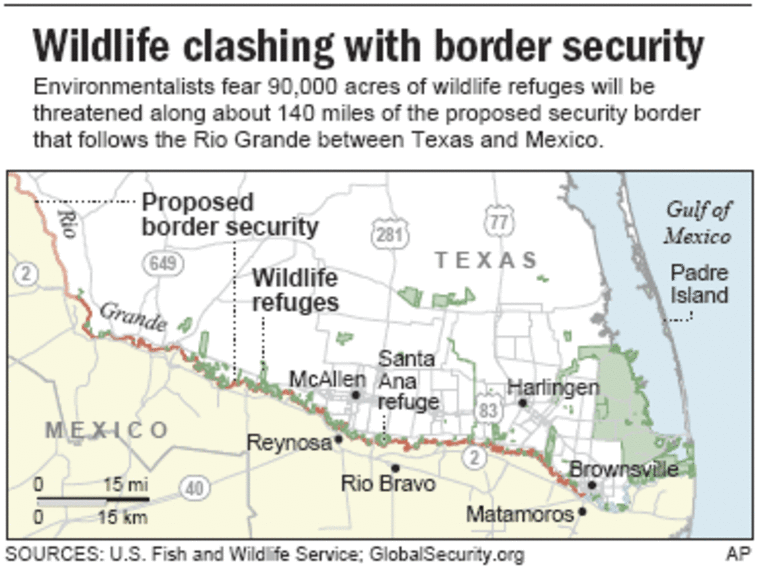The U.S.-Mexico border fence will make life harder on some South Texas farmers, damage valuable wildlife habitat, impair views and generally become an obstacle to border life, the Department of Homeland Security acknowledged in an environmental study of the fence's impact.
For the people of the Rio Grande Valley, the federal government said in the recent study that there are serious trade-offs for 70 miles of fence segments that will help Border Patrol control illegal immigration and smuggling from Mexico. But it added that residents will benefit from increased security against "illegal cross-border activity."
Construction could begin in the valley next week.
"If you live within a mile or so of the river, which is where the fence will be built, you are eternally sentenced to an unsafe existence," Eagle Pass Mayor Chad Foster, head of the anti-fence Texas Border Coalition, said in a prepared statement.
However, some South Texas denizens will get a break — the fence will include hundreds of holes so the endangered ocelot and jaguarundi, species of cats, can get to the Rio Grande to drink.
The department's Environmental Stewardship Plan for the Rio Grande Valley was controversial before it was ever released. DHS drew up the plan after Secretary Michael Chertoff waived environmental studies required by federal law to speed construction of the fence.
As the federal government ramps up efforts to build fencing along the border, Chertoff also has waived environmental laws to build barriers in California and Arizona.
"The Secretary made it clear when he invoked the waiver authority that that by no means meant we would act without some responsible plan," Customs and Border Protection spokesman Barry Morrissey said. "The environmental work is still being done."
Activists still 'very wary'
Environmental advocates said they hadn't fully reviewed the document Tuesday afternoon but said it was a mistake for Chertoff to waive the normal process for vetting projects and minimizing their environmental impact.
"There was a formal process in place for how to go through the (environmental impact statement) process and it's something we believe in firmly," said Oliver Bernstein, spokesman for the Sierra Club in Texas. "Any attempt to come up with your own fixes we're going to be very wary of that."
New maps of the 21 fence segments running through the lower Rio Grande Valley showed very little variation from preliminary maps released last fall.
The new plan does not clarify the issue of access gates in the fence — one of the most frustrating for landowners along the border who wonder how the gates will be operated, if they will be manned and how access could be restricted. The question is critical for homeowners whose homes and businesses will be left in the no man's land between the fence and the river.
Without offering details, the plan recognized that the fence will be an obstacle to farmers in terms of access to the land for themselves and their machinery and livestock, and will increase their costs and may decrease the land's value.

Potential impact on 'gene flow'
Despite the access holes for the endangered cats, the plan acknowledges that the fence "will likely impact wildlife movement, access to traditional water sources, and potential for gene flow" because some of the species cross the border into Mexico to mate.
Seven segments in Hidalgo County where DHS will build a 15- to 18-foot concrete wall into the river side of levees will not include the wildlife holes. The longest of those segments will be just over four miles, the plan said.
Seventeen of the 21 fence sections in the Valley will affect wildlife management areas or national wildlife refuges, 14 of them directly.
Since fence construction will overlap with the migratory bird nesting season, wildlife experts will mark nests in construction's path and attempt to move them. Still, the noise from construction could overwhelm birdsongs, making it difficult for some to find mates, according to the plan.
The government will try to avoid cutting down or to transplant mature trees but concedes that it won't always be possible.
"Removal will result in long-term major adverse impacts, because these large mature trees are virtually irreplaceable," the plan said.
